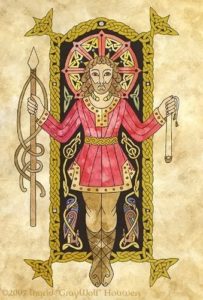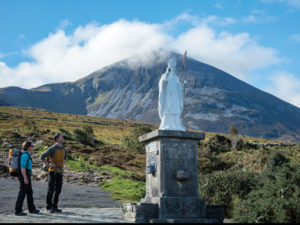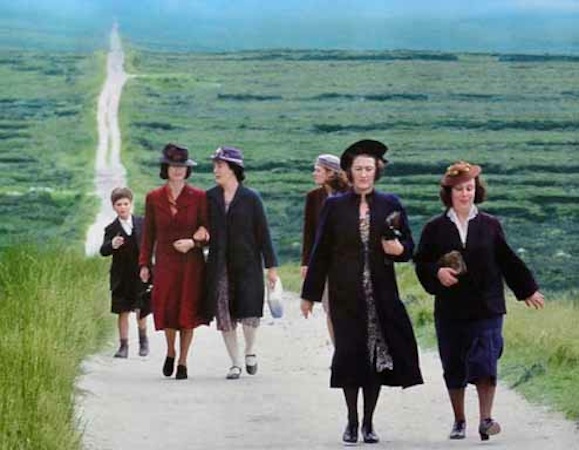The festival of Lughnasa was observed in Ireland at the end of the productive period in agriculture, and in folk circles, it is said to correspond with the third stage in life when it is time to reflect on maturity, achievement, and fruition.
The four festivals that mark the beginning of each season in Ireland are Imbolc, Bealtaine, Lughnasa and Samhain. The period of Lughnasa begins on August 1, and marks the start of the harvest season, which includes the months of August, September, and October. This season ends with the great festival of Samhain, or Halloween, on November 1.
Lughnasa is identified with the fruition and completion of the agricultural year and as such, may also be identified with the same period in a person’s life, and an opportunity to pause, ponder and reflect on the years of productivity and consequent fruition.

Lughnasa is named after the Irish god Lugh, whose name means light or bright one. He established the harvest festival and funeral games, Áenach Tailteann, in honor of his foster mother Tailtu, who died of exhaustion after clearing the plains of Ireland for agriculture. This fair used to take place in Tailtu (Teltown, Co. Meath) and was famous in bygone days. The crowds were so great in 1168 that the Annals of the Four Masters recorded the line of horses and vehicles was six miles long.
Lughnasa is a time for celebration because traditionally farmers hoped to have the first crops ready for harvesting by this time. These crops included oats, potatoes, and fresh fruit, and the festive meal was prepared from these foods. In bygone days it was also a time for community gatherings and excursions to hills and lakes, and often included hill climbing on the first Sunday in August or the last Sunday in July. The annual Puck Fair in Killorglin, Co. Kerry, commences on August 10 and is a good example of the Lughnasa tradition of celebrating the start of the harvest season with music, dance, drink, and play, as well as the trading of goods and livestock. This fair also involves the crowning of a male goat by a young girl, which some scholars think is a pagan fertility symbol. If so, it suggests that even in the midst of the harvest and fruition of one year’s crops, there is already the acknowledgment that the fruitful cycle will begin again.

Folklorist Máire McNeill identified 78 hills that were used for these large community occasions and pilgrimages, the most famous being the annual pilgrimage to Croagh Patrick, in Co. Mayo, which occurs on Reek Sunday, the last Sunday of July. This pilgrimage has been taking place for well over a thousand years with 15 to 30 thousand pilgrims making the ascent on that day. The mountain is 764 meters in height and the climb takes about two hours. Some pilgrims undertake the climb in their bare feet over sharp stone and shale sliding underfoot.
In bygone days, courtships initiated at this time culminated in marriage on “Runaway Sunday” or “Galloping Tuesday,” which were the vernacular names for the last Sunday and last Tuesday before the beginning of Lent on Ash Wednesday.
Lughnasa belongs to that third stage of a person’s life, where it is time to reflect on what has been achieved and to realize that climbing new hills with the agility of youth is no longer possible. It is the time when women enter the third cycle of their lives. If they have had children, they are grown and independent, and physiologically the menopausal years have begun. Likewise, for men, the need to provide for growing children has diminished and retirement is no longer on the distant horizon.
Lughnasa is therefore a time for reflection, thanksgiving, and recognition of achievement. It is a time to give thanks for past abundance and to recognize that a new period of life is beginning to unfold. Just as the farmer stores the grain, and the housewife processes the garden produce, it is a time to consider the achievements of life so that they may sustain us through this season of life.
The Lughnasa period of our lives is also an opportunity to appreciate the next generation as they climb the hilltops and we can calmly observe them from the foothills without envy or regret, glad that we have reached this time of year, and appreciative of its bounty both in nature and in ourselves. ♦
“Croagh Patrick” by Mark Waters / Flickr via Wikimedia Commons


Leave a Reply